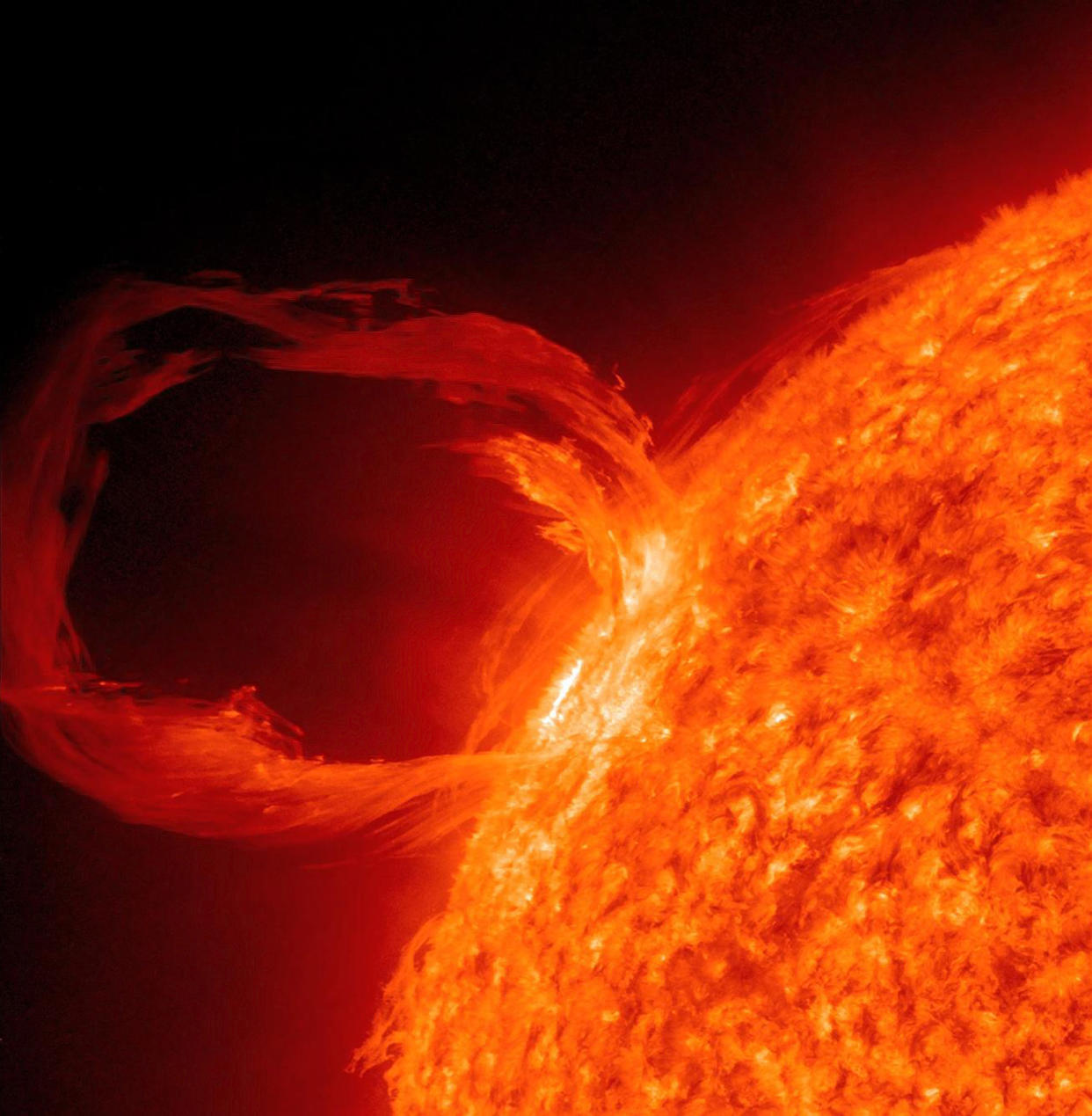Spacecraft record weird ‘music’ of our planet during solar storm

An eerie song that wouldn’t sound out of place on a sci-fi film soundtrack came wailing from our planet as it was hit by a solar storm.
But the strange music is actually created by waves in Earth’s magnetic field when it is buffeted by a solar storm.
Solar storms are eruptions of charged particles from the sun – and the strange “song” was heard after scientists analysed data from the Cluster Science Archive.
Cluster consists of four spacecraft that orbit Earth in formation, investigating our planet’s magnetic environment and its interaction with the solar wind – a constant flow of particles released by the Sun into the solar system.
READ MORE:
Nasa satellite captures incredible beauty of UK seen from space
Binary Earth-sized planets possible around distant stars
Insects could die out in ‘worst extinction since the dinosaurs’
A team led by Lucile Turc, a former European Space Agency research fellow who is now based at the University of Helsinki, Finland, investigated the effect of solar storms on our planet.
As part of their orbits, the Cluster spacecraft repeatedly fly through the foreshock, which is the first region that particles encounter when a solar storm hits our planet.
In the early part of the mission, from 2001 to 2005, the spacecraft flew through six such collisions, recording the waves that were generated.
The new analysis shows that during the collision, the foreshock is driven to release magnetic waves that are much more complex than first thought.
“Our study reveals that solar storms profoundly modify the foreshock region,” says Turc.
When the frequencies of these magnetic waves are transformed into audible signals, they give rise to an uncanny song.
In quiet times, when no solar storm is striking the Earth, the song is lower in pitch and less complex, with one single frequency dominating the oscillation.
“It’s like the storm is changing the tuning of the foreshock,” says Turc.

 Yahoo News
Yahoo News 

